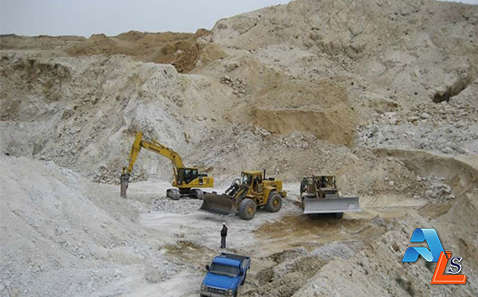
Feldspar minerals, a key component in the Earth’s crust, are renowned for their significant role in both geological processes and industrial applications. Among these, Sodium Feldspar, also known as Albite (NaAlSi3O8), stands out due to its unique chemical and physical properties. However, a fascinating aspect of Sodium Feldspar is its potential to exhibit properties akin to Nepheline (Na3K(Al4Si4O16)). This blend of characteristics can open new avenues in both scientific research and practical applications.
Feldspars are tectosilicate minerals composed mainly of aluminum, silicon, and oxygen, with varying amounts of potassium, sodium, and calcium. Sodium Feldspar, or Albite, specifically contains sodium and is an essential component in the formation of igneous, metamorphic, and sedimentary rocks.
Nepheline, on the other hand, is a feldspathoid mineral that typically forms in silica-undersaturated environments, often found in alkaline igneous rocks. Its chemical composition is predominantly sodium and potassium aluminum silicate, lacking the silica content that characterizes typical feldspars.

The intersection of Sodium Feldspar and Nepheline properties occurs primarily in certain geological settings where chemical processes induce the formation of hybrid minerals. This phenomenon can result from the partial replacement of silica in Albite by other elements, leading to a structure that partially resembles Nepheline.
1. **Chemical Composition**: In some geological environments, Sodium Feldspar may incorporate potassium, altering its chemistry towards a Nepheline-like composition. This modification can occur during processes such as metasomatism, where the mineral’s original elements are partially replaced by others from hydrothermal fluids.
2. **Structural Features**: The crystalline structure of Albite can be subtly modified under specific conditions, leading to a lattice arrangement that shares similarities with Nepheline. This structural alteration is often accompanied by changes in physical properties such as density and refractive index.
3. **Geological Formation**: Sodium Feldspar with Nepheline properties is commonly found in silica-undersaturated alkaline igneous rocks, such as phonolites and nepheline syenites. These rocks provide the necessary conditions for the hybrid mineral formation, including high concentrations of alkali metals and low silica content.
The presence of Nepheline properties in Sodium Feldspar can significantly impact both industrial applications and geological research.
1. **Industrial Uses**: The unique chemical and structural characteristics of this hybrid mineral can enhance its functionality in various industries. For instance, in ceramics and glass manufacturing, the altered melting behavior and improved fluxing properties can lead to more efficient production processes and higher quality products.
2. **Geological Indicators**: The formation of Sodium Feldspar with Nepheline properties can serve as a valuable indicator of the geological history and conditions of specific rock formations. Understanding these hybrid minerals can provide insights into the processes of magmatic differentiation, metasomatism, and the evolution of alkaline magmatic systems.
3. **Material Science**: The study of these hybrid minerals can contribute to advancements in material science, particularly in the development of novel materials with tailored properties for specific applications. The ability to engineer minerals with desired characteristics opens new possibilities in fields such as electronics, optics, and nanotechnology.
Sodium Feldspar exhibiting Nepheline properties represents a fascinating convergence of mineralogical characteristics that bridges the gap between traditional feldspar and feldspathoid minerals. This hybridization not only enriches our understanding of mineral formation and geological processes but also holds significant potential for industrial and scientific advancements. As research continues to unravel the complexities of these unique minerals, their role in both natural and engineered systems is poised to expand, offering new opportunities and insights across multiple disciplines.

Whether you have questions or you would just like to say hello,Contact us!
Call Anytime:
+86 15837207537Send E-mail:
info@lsakminerals.comAddress:
Anyang City , Henan Province, China.